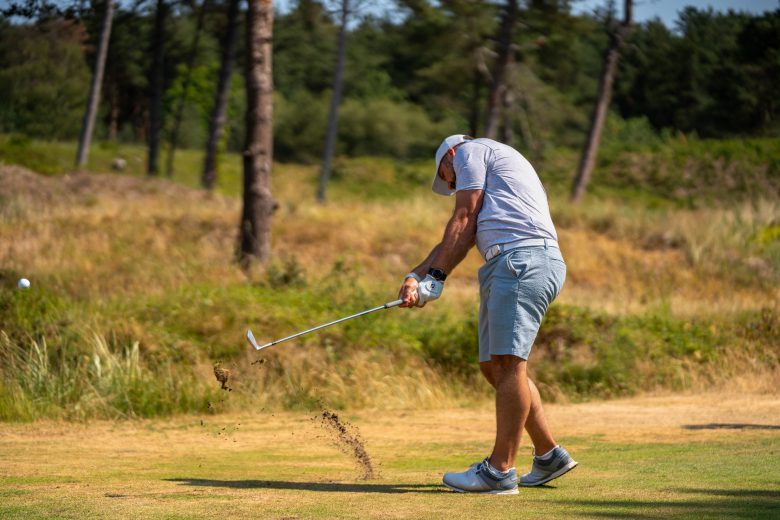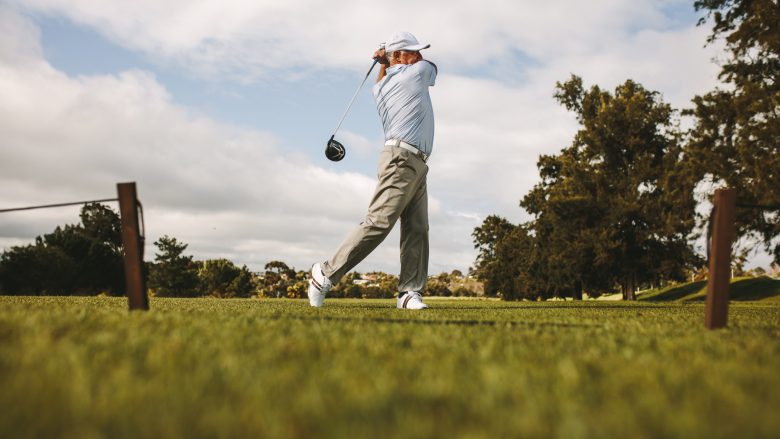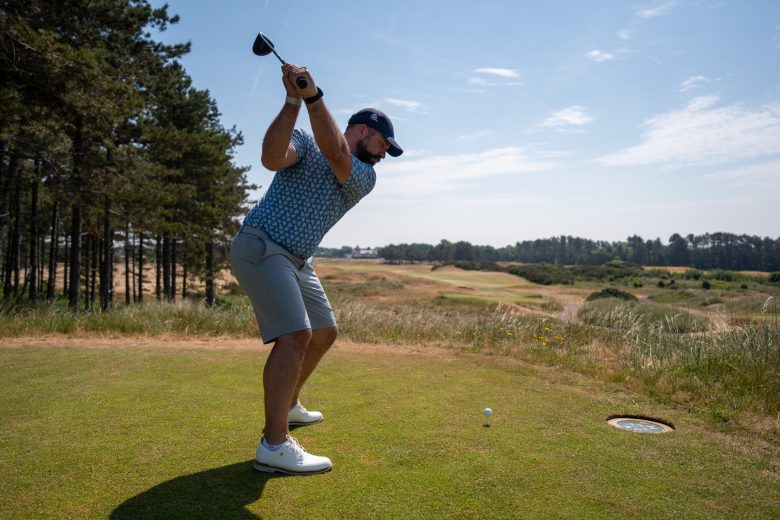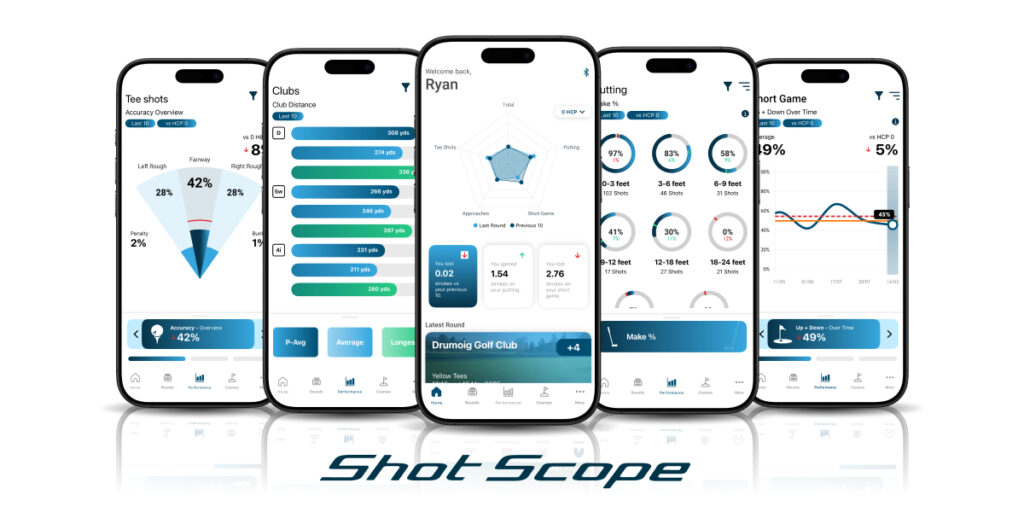As with our 25hcp Law of Averages, we will now take a closer look at the stats of 20hcp players to give some benchmarks and insights.
Here are some top-level statistics before we delve deeper:
| Avg. Par 3 Score | Avg. Par 4 Score | Avg. Par 5 Score | FIR% | GIR% | Up and Down % | Three Putt % | Make % from 0-6ft |
| 4.0 | 5.31 | 6.23 | 45% | 16% | 32% | 13% | 84% |
How distance differentiates the 20hcp from a 25hcp.
The typical 20 handicapper, with driver, averages 225yds (P-Avg.) off the tee which is almost 20yds further than that of a 25hcp, but 14yds short of a 15hcp.
As we know when we compared driver versus 3 wood, distance plays a big role in scoring. The extra length 20 handicappers have over that of a 25 handicapper can equate to almost a two-club difference.
In terms of gaining strokes on the 25hcp golfer, when playing into the green with their added length, the 20hcp can be hitting up to two clubs less – this is a significant difference.
With the driver in hand, accuracy is not sacrificed. Looking specifically at driver and 3 wood, there is only a 2% difference between the two in terms of fairways hit.
Less distance, less club, more greens hit.
When it comes to hitting the green, a 20hcp player with 5 iron is 7% more likely to hit the green than the 25hcp player.
However, when we account for the two-club difference we begin to see where the difference in strokes gained is made up. A 20hcp golfer is twice as likely to hit the green with a 7 iron compared to a 25hcp player with a 5 iron.
With the extra length, players are hitting less club into greens and in doing so increase the likelihood of hitting the green. Hitting greens is incredibly important when it comes to scoring.
Getting up and down – a key differentiator between good scores and bad.
The likelihood of successfully getting up and down is lower than you would think for players of all levels. If we take a 15hcp as the average golfers’ index, they successfully convert an up and down 35% of the time.
A 20hcp golfer typically will convert 3 out of 10 up and down attempts. Therefore, for the seven unsuccessful efforts they can be dropping one, two, or more strokes depending on how good their short game is.
Short game shots that hit the green will typically finish inside 6ft approximately 34% of the time which is a significant contributor to the likelihood of making the putt – converting the up and down.
If you want to get up and down more often, check out this blog.
Why is being inside 6ft so important?
In terms of make percentage, being inside 6ft as opposed to outside drastically changes the likelihood of making the putt.
For a 20hcp golfer, a putt inside 6ft has a make percentage of 84%. When we move back to the next distance increment, 6ft-12ft, this number more than halves to 37%.
In terms of where putts miss, as with most golfers, the 20hcp golfer typically misses their putts short. A staggering 60% of putts miss short of the hole – four out of ten attempts have a chance of going in!
Working on distance control with the putter from longer distances would go a long way to reducing unnecessary dropping of shots on the green.
When it comes to putting, distance plays a huge factor and we look at it in more detail in this blog.
The main takeaways.
As with all players, length is always beneficial to the rest of your game and some distance control with the putter can take off the pressure on the greens.
Want to learn the ins and outs of your game with data?
Check out a Shot Scope performance tracking product. There are various options to choose from including GPS watches, laser rangefinders, and GPS Handhelds all of which are subscription free!
The future of golf is powered by Shot Scope.
Cover Image: Jacob Lund / ShutterStock








